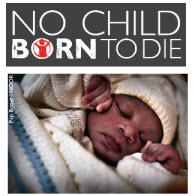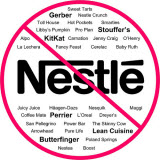Sunday
Dec282008
Book Review: The No-Cry Nap Solution (by Elizabeth Pantley)
 Sunday, December 28, 2008
Sunday, December 28, 2008
I should preface this by saying that I own and have read many of Elizabeth Pantley's other No-Cry books. As many of my readers know, I am supportive of a no-cry approach, so when I was given the opportunity to read and review the No-Cry Nap Solution on my blog, it seemed like a natural fit.
The No-Cry Nap Solution offers parents information and techniques to ensure that their baby, toddler or preschooler naps well. The book teaches gentle, loving, tear-free techniques, developed by Elizabeth Pantley and tested by hundreds of families around the world.
It includes:
Like all of her other books, Elizabeth Pantley emphasizes approaches to sleep that do not involve letting your baby cry it out. So many parents are told that cry it out is the only thing that will work, so it is refreshing to see a book that offers other approaches. Also, these techniques have been tested by hundreds of families, meaning that they are not just made up ideas about what might work or anecdotal evidence, but they are tested approaches.
I love the great information on what normal sleep is and how much sleep children require. I have used this information in Pantley's other books countless times when trying to determine whether my child is getting enough sleep and if my child was fighting sleep trying to figure out if perhaps it was time to make a transition.The book has great information on how to determine the right time for the nap and why this is critical to successful napping. I think the information on nap cycles (i.e. the sleep cycles that babies go through during their nap) will be very helpful to parents that have short nappers and want to learn how to extend the nap.
I like the fact that the book does not judge or tell parents that one approach to sleep is better than another. It offers solutions for naps in cribs, beds, slings, swings, cars, and so on. It lets families choose solutions that are going to fit with their lifestyle and parenting approach. For example, I love the reminder that you do not have to make your baby fall asleep alone if you choose not to. She explains that "a large percentage of babies are parented to sleep for every nap and every nighttime sleep" and that "all of these children learn how to fall asleep on their own - over time."
I really enjoyed the information on the Hush Hour, which is an alternative to naps for children that are outgrowing a nap or transitioning out of napping altogether. It provides an alternate approach to giving a child some down time, which is crucial even for non-nappers.
I liked the information on being thoughtful about creating patterns. Pantley explains that sleep associations and patterns can be powerful, which can be good and bad. Those consistent patterns and associations will help babies drift off to sleep when they are supposed to, but it can also tie you down. We know parents that could never go out in the evening with their kids because it would completely disrupt their sleep routine for a week afterward. With our kids, we created portable sleep associations (a sling, mom and/or dad, a lovey, etc.) which of course creates other dependencies but they were ones we were more willing to live with than being tied to our house every evening.
On the whole, I really liked this book. But there are a few minor things that I didn't like and that I would like to list here either as cautions to parents reading the book or as possible improvements to a future edition of the book.
Pantley offers an excellent list of things that could help to ease colic. One that she doesn't mention is possible foods that the mother eats if breastfeeding. In general, breastfeeding mothers can eat anything, but some foods may irritate some babies and mothers should be mindful of this and may want to consider eliminating possible irritants if their baby does have colic.
I think this would be a great book for parents to buy before their baby arrives or when their baby is a newborn. As I read it, I felt like a lot of the nap problems that people have could have been prevented if they had understood more about sleep and done some things differently from the start.
That said, it is also useful if your baby is older and you are having nap problems, but it certainly is not (nor is it intended to be) a quick fix. It requires analyzing the problems and trying out possible solutions. It requires a gentle approach and plenty of patience.

Overview
The No-Cry Nap Solution offers parents information and techniques to ensure that their baby, toddler or preschooler naps well. The book teaches gentle, loving, tear-free techniques, developed by Elizabeth Pantley and tested by hundreds of families around the world.
It includes:
- Information on why naps are important and how much nap time is required at different ages.
- Information and tips for newborns to get off on the right foot
- Help making nap changes, such as:
- Making short naps longer
- What to do when your needs a nap, but won't take one
- How to shift from two naps to one and from one nap to no naps
- Changing from in-arms sleep to in-bed sleep
- Falling asleep without the breast, bottle or pacifier
- Transitioning from motion sleep to stationary sleep
- Helping your baby sleep on his back
- Effective swaddling
- Changing car naps to bed naps
- Colic care
- Dealing with special situations, such as day care naps, standing up in the crib, waking up crying, vacation naps, twins/triplets or kids close in age, and special needs children.
What I Like About This Book
Like all of her other books, Elizabeth Pantley emphasizes approaches to sleep that do not involve letting your baby cry it out. So many parents are told that cry it out is the only thing that will work, so it is refreshing to see a book that offers other approaches. Also, these techniques have been tested by hundreds of families, meaning that they are not just made up ideas about what might work or anecdotal evidence, but they are tested approaches.
I love the great information on what normal sleep is and how much sleep children require. I have used this information in Pantley's other books countless times when trying to determine whether my child is getting enough sleep and if my child was fighting sleep trying to figure out if perhaps it was time to make a transition.The book has great information on how to determine the right time for the nap and why this is critical to successful napping. I think the information on nap cycles (i.e. the sleep cycles that babies go through during their nap) will be very helpful to parents that have short nappers and want to learn how to extend the nap.
I like the fact that the book does not judge or tell parents that one approach to sleep is better than another. It offers solutions for naps in cribs, beds, slings, swings, cars, and so on. It lets families choose solutions that are going to fit with their lifestyle and parenting approach. For example, I love the reminder that you do not have to make your baby fall asleep alone if you choose not to. She explains that "a large percentage of babies are parented to sleep for every nap and every nighttime sleep" and that "all of these children learn how to fall asleep on their own - over time."
I really enjoyed the information on the Hush Hour, which is an alternative to naps for children that are outgrowing a nap or transitioning out of napping altogether. It provides an alternate approach to giving a child some down time, which is crucial even for non-nappers.
I liked the information on being thoughtful about creating patterns. Pantley explains that sleep associations and patterns can be powerful, which can be good and bad. Those consistent patterns and associations will help babies drift off to sleep when they are supposed to, but it can also tie you down. We know parents that could never go out in the evening with their kids because it would completely disrupt their sleep routine for a week afterward. With our kids, we created portable sleep associations (a sling, mom and/or dad, a lovey, etc.) which of course creates other dependencies but they were ones we were more willing to live with than being tied to our house every evening.
What I Don't Like About This Book
On the whole, I really liked this book. But there are a few minor things that I didn't like and that I would like to list here either as cautions to parents reading the book or as possible improvements to a future edition of the book.
- Unsafe co-sleeping pictures: Pantley is supportive of co-sleeping and has excellent information on her Web site on co-sleeping safety. However, the book includes several pictures of unsafe co-sleeping situations. The one that shocked me the most was of a dad sleeping on his back on his couch, with his toddler lying on her stomach on top of him and his newborn lying on top of the toddler. Cute, but yikes! I hate it when people (like the Ontario coroner) claim that co-sleeping is unsafe when only certain types of co-sleeping are unsafe. But if those that are supportive of co-sleeping can't be clear about their message, then it is no wonder we can't get those that are not supportive of it to come around.
- Using word "schedule" to describe a "routine": Over and over again in the book, Pantley refers to your daily schedule. It is clear if you read carefully, that she is not talking about a strict schedule (a la Babywise), but rather a consistent routine that is based on your baby's needs and that has some flexibility built into it. I don't like the word "schedule" because it smacks of strictly parent-led approaches (e.g. to feeding) that can often result in mom having a low milk supply, which can then lead failure to thrive or a need to supplement with formula. In fact, a study on "schedulers" versus "huggers" found that twice as may schedulers had given up breastfeeding when the baby reached 3 months of age (85% vs. 37%). Parents need to learn to watch their babies for cues of hunger, tiredness, etc. and Pantley does explain this in her book, but I just think the word schedule (along with sample schedules with specific times in them) could be misleading to people giving the book a quick read.
- Left out info on why not to do cry-it-out: The No Cry Sleep Solution has excellent information on why not to do cry-it-out. This isn't included in this book, which I think is too bad.
Other Thoughts
Pantley offers an excellent list of things that could help to ease colic. One that she doesn't mention is possible foods that the mother eats if breastfeeding. In general, breastfeeding mothers can eat anything, but some foods may irritate some babies and mothers should be mindful of this and may want to consider eliminating possible irritants if their baby does have colic.
Recommendation
I think this would be a great book for parents to buy before their baby arrives or when their baby is a newborn. As I read it, I felt like a lot of the nap problems that people have could have been prevented if they had understood more about sleep and done some things differently from the start.
That said, it is also useful if your baby is older and you are having nap problems, but it certainly is not (nor is it intended to be) a quick fix. It requires analyzing the problems and trying out possible solutions. It requires a gentle approach and plenty of patience.




















Reader Comments (15)
Than you for the review! Would you say it is valuable to the parent who has already read The NCSS and The NCSS for Toddlers and Preschoolers? I have a napper who wakes after 45 minutes and likes to stay latched for another 45 minutes.
@Earthbaby - I would say there are a number of useful tips and information about extending naps and also reducing the suck/sleep association (again, if desired - not necessary for those that are not bothered by it).
Thanks for the review. I'm going to see if I can pick up a copy at my library. We don't normally have any real nap issues because we all seem to go with the flow. Some days there are long naps, other days short naps, some days one nap and some days two naps. We use a variety of techniques, but mostly I just follow the baby's signals and cues.
I also think your point about co-sleeping advocacy is RIGHT ON!
Nice review, thanks.
Although reading about things such as , extending a nap, or determing the right time for a nap, feels like a foreign language. I have always let my baby sleep and nap as and when she wants to. I can't even imagine what extending a baby's nap looks like, lol. I'm infinitely curious.
@Mon if you have a baby that naturally naps well, then you're one of the lucky ones! If every baby slept when he needed to and woke when he was rested enough, that would be great! Unfortunately, a lot of babies will fight going to sleep or will wake between phases of sleep. That is when books like this are helpful.
[...] books, such as the No Cry Sleep Solution and the No Cry Nap Solution (you can check out my review of the book too) talk about sleep associations, how they are created and how to change [...]
[...] books, such as the No Cry Sleep Solution and the No Cry Nap Solution (you can check out my review of the book too) talk about sleep associations, how they are created and how to change [...]
I realize this is an old post - but I thought I'd share since I just re-read your review... I'm reading her no-cry sleep solution for toddlers right now -- and in it she has a photograph (and even a description) that made me cringe too - a toddler asleep at the top of stairs and all you see is the feet... um... I'm all for "sleeping wherever" as long as it's SAFE!
And... I while on some levels reading these books BEFORE you have a baby might really good -- in our case it would not have made us avoid our issues... I read her no-cry sleep solution for babies when my babes were tiny -- but here we are... we still have issues!!!
[...] We’re having some sleeping challenges here, and I was just reading Annie at PhD in Parenting’s review of Elizabeth Pantley’s book, The No-Cry Nap Solution [...]
[...] the The No Cry Sleep Solution for Toddlers and Preschoolers and the The No Cry Nap Solution (also my review) offer great tips and ideas. I have used these books extensively for myself and to help others. I [...]
[...] the The No Cry Sleep Solution for Toddlers and Preschoolers and the The No Cry Nap Solution (also my review) offer great tips and ideas. I have used these books extensively for myself and to help others. I [...]
[...] internalized by readers. Just as I’ve called on the media to lay off the bottle imagery and told Elizabeth Pantley that I don’t like the unsafe co-sleeping images in her books, I think it is important for publishers like the Ottawa Citizen to think carefully about whether [...]
We were taught the Baby Wise system (In a slightly different form) and they don't teach "by the clock" schedule either. They teach routines. You use the clock as a guideline (my son usually gets up at 3:30p), but you use your own judgement first. (He went down at 12:30 instead of his normal 1, so he's had the same amount of nap now. Or, It is 3:15p now, that's good enough) Or even, my kid normally goes down for his nap at 1:00 p, but it is 11:30a and he's tired now. DON'T keep him up until 1p to satisfy the clock, that's why God gave us our parental judgement!
So this may be a false dichotomy.
@My Boaz's Ruth:
I think listening to your own judgement is very important. I would never recommend Ezzo's Baby Wise (see http://ezzo.info/) or others like http://www.phdinparenting.com/2009/09/02/why-i-cant-recommend-ferber-or-weissbluth/" rel="nofollow">Ferber and Weissbluth.
Thank you for the review! This sounds like a book that could really help me.